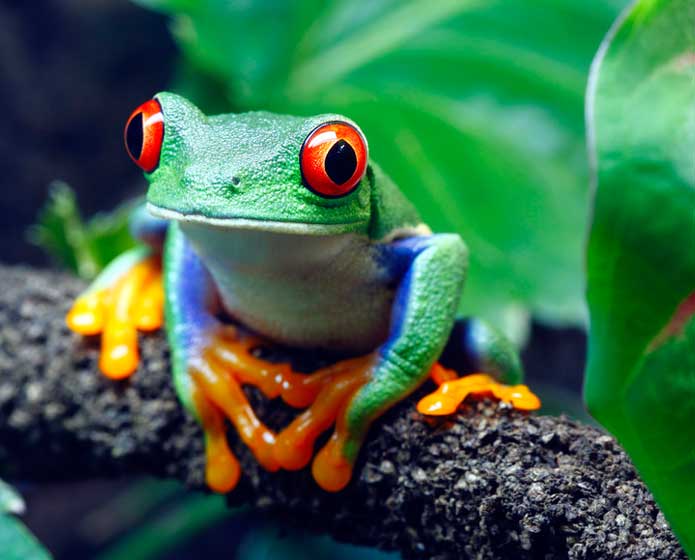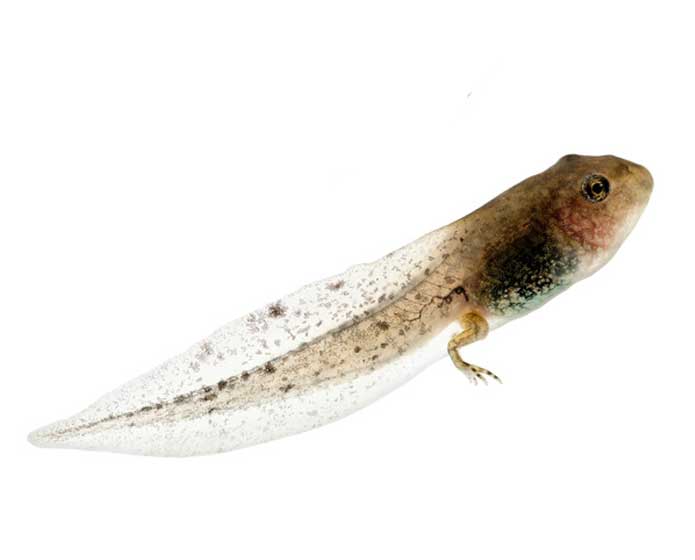Facts About Amphibians
Posted by Admin / in Science Facts
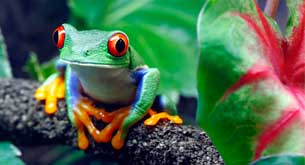
Amphibians like this red-eyed tree frog start their life as a tadpole living under the water, but later develop lungs to move around on land.
Amphibian Facts
- Amphibians are cold-blooded which means the temperature of their body changes when the temperature of the air or water around them changes.
- Amphibians are vertebrates like mammals, birds, fish and reptiles. Vertebrates are animals that have a backbone.
- Amphibians can live on land and in the water.
- When they are young, most amphibians live in the water and breathe air using gills like a fish.
- As they grow, most amphibians spend more time on land because they breathe air with their lungs like mammals, reptiles and birds.
- Amphibians do not go far from the water. They must keep their skin moist.
- There are many species of amphibians. Toads, frogs, salamanders, caecilians, and newts are some of the categories of amphibian species.
- Frog and toad babies are called tadpoles. Tadpoles live underwater and breathe with their gills until their lungs form.
- Salamanders and newt babies are called larva. Larvae live underwater until their lungs develop.
- Amphibians that live in a cold climate hibernate in the winter.
- During hibernation, a frog breathes through only their skin.
- Frogs in hibernation can live in temperatures as cold as 21 degrees Fahrenheit (-6 degrees Celsius).
- Toads and frogs make croaking sounds to attract their mate.
- Most amphibians have webbed feet so they can easily swim in the water, even after they develop lungs and spend more time on land.
- Some amphibians are poisonous. The poison arrow frog is quite poisonous to people. Only .035 ounces (1 gram) of poison from them would kill up to 100,000 people.
- The smallest amphibian is the Cuban Tree Frog which only grows to one-half an inch long (12 mm).
- The largest amphibian is the Japanese and Chinese Giant Salamander, which grows to 5 to 6 feet in length (1.5 to 1.8 meters).
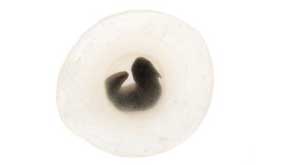
This frog egg is developing into a tiny tadpole
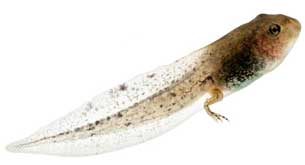
The tadpole now is starting to grow legs and is beginning to develop lungs.
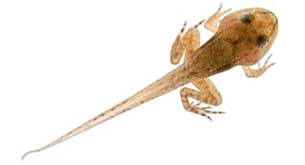
The tadpole now has 4 legs, developed eyes and almost fully developed lungs
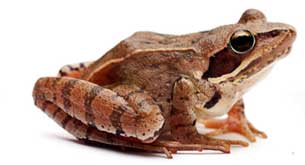
The tadpole is now a fully developed adult frog
